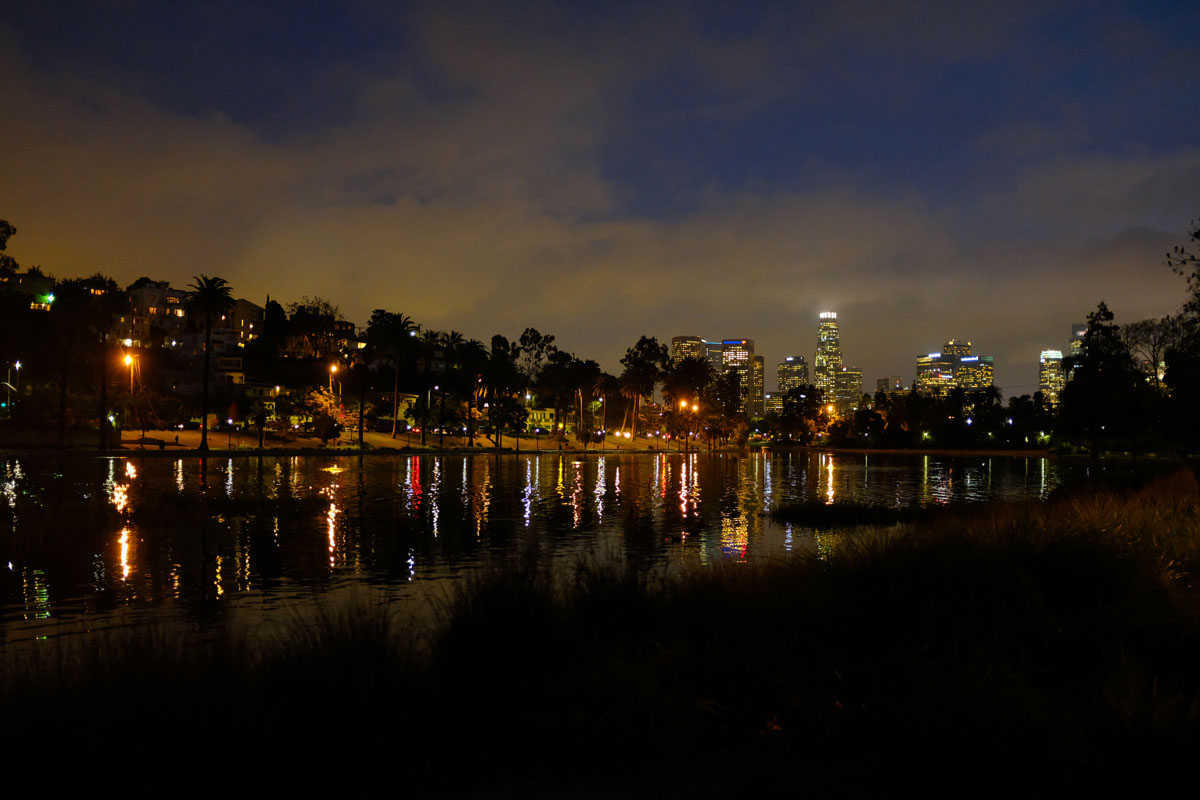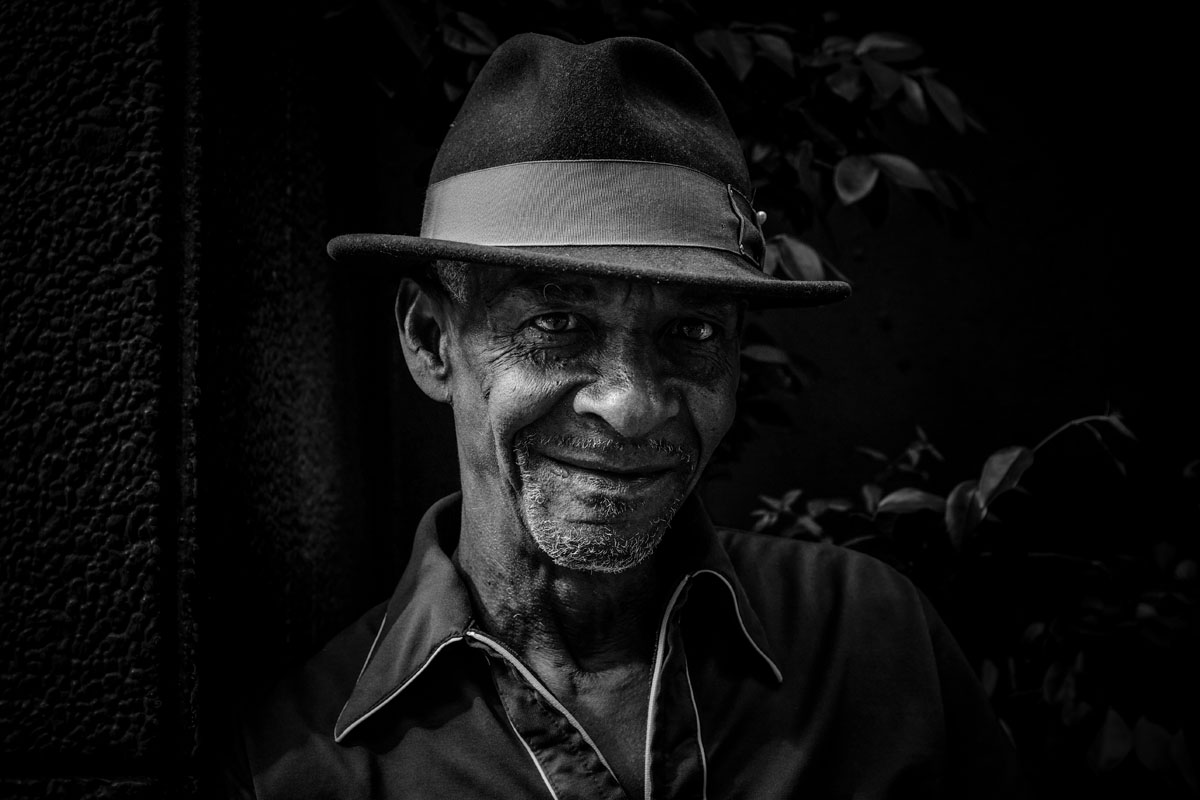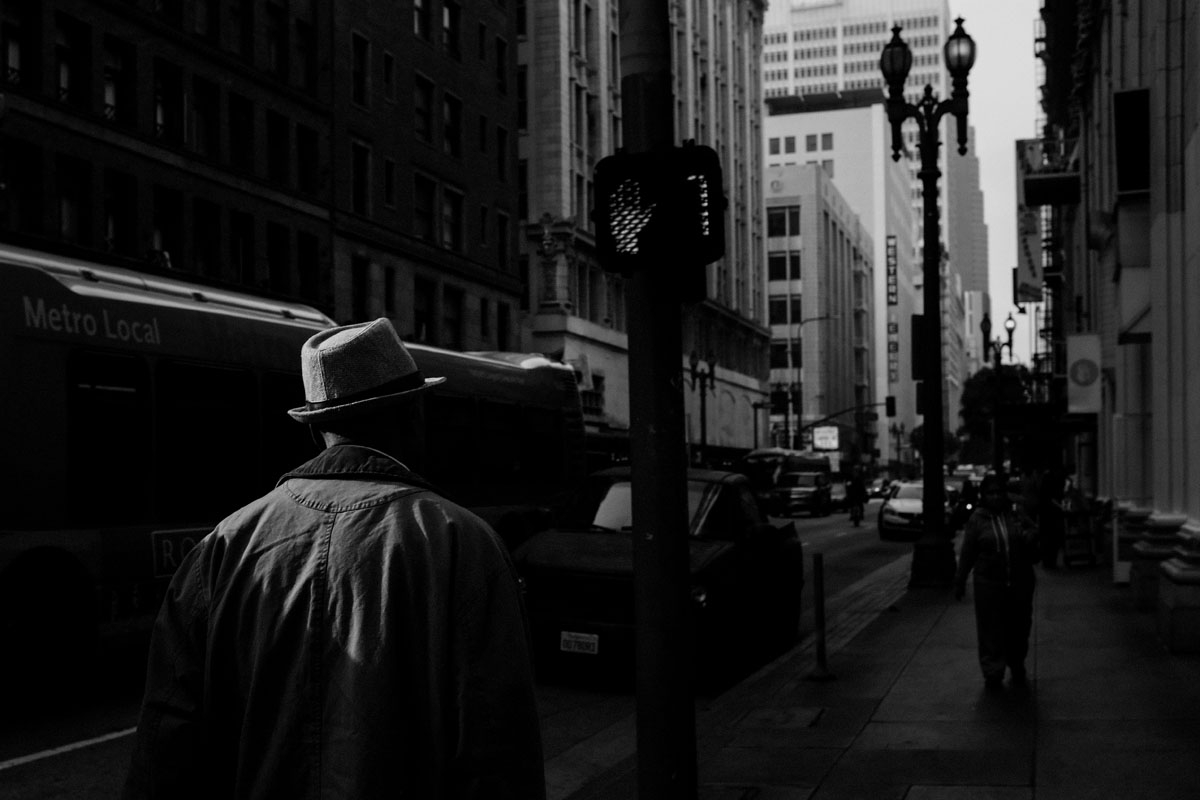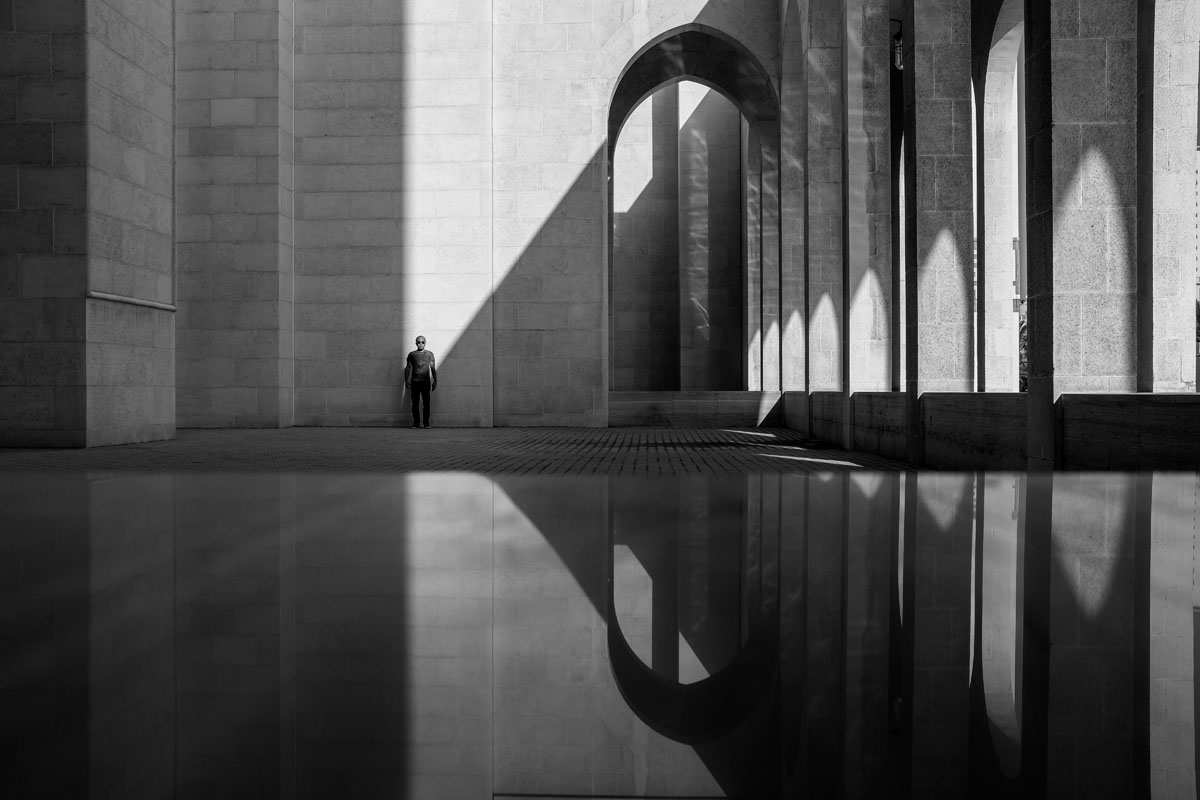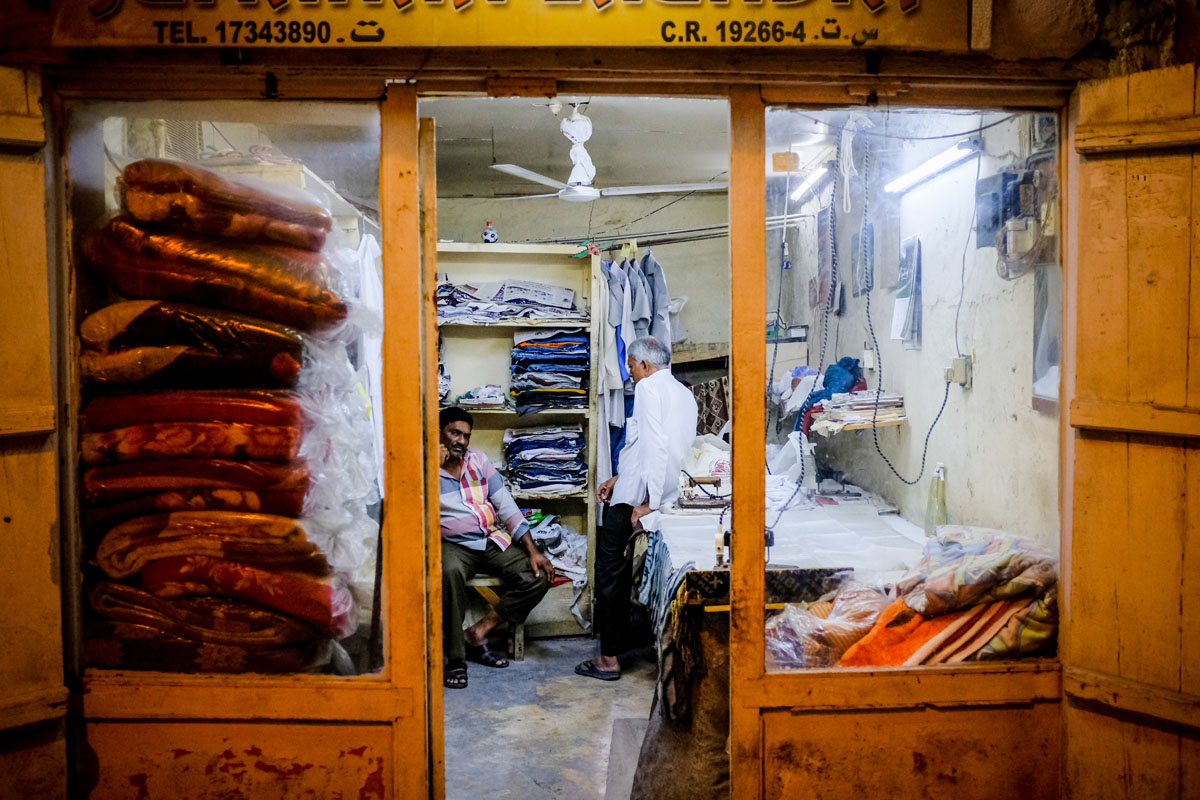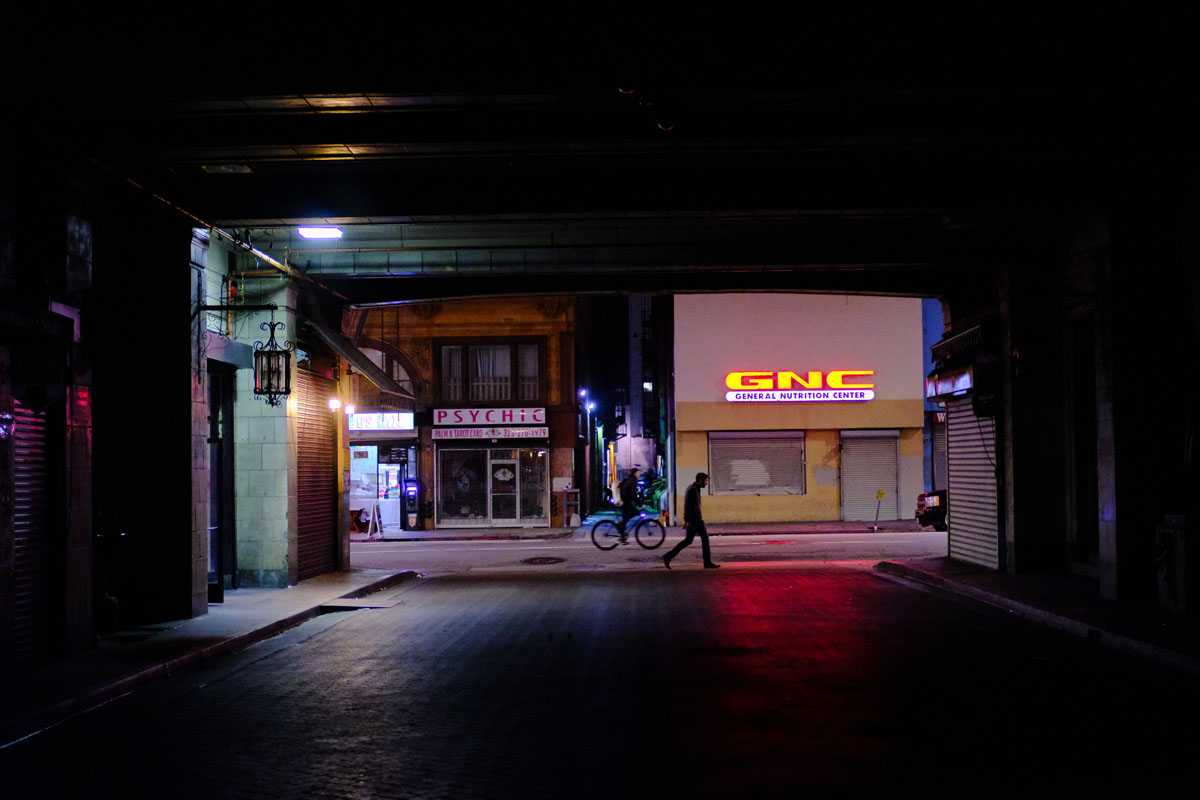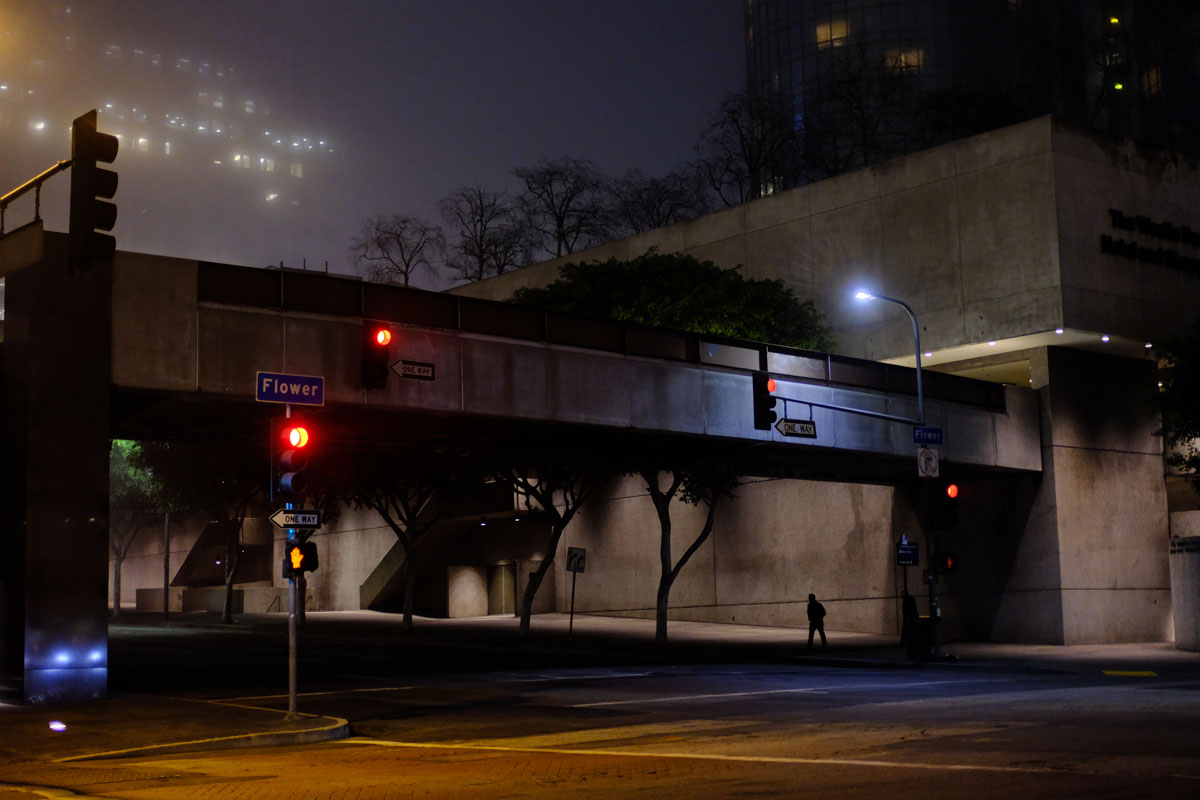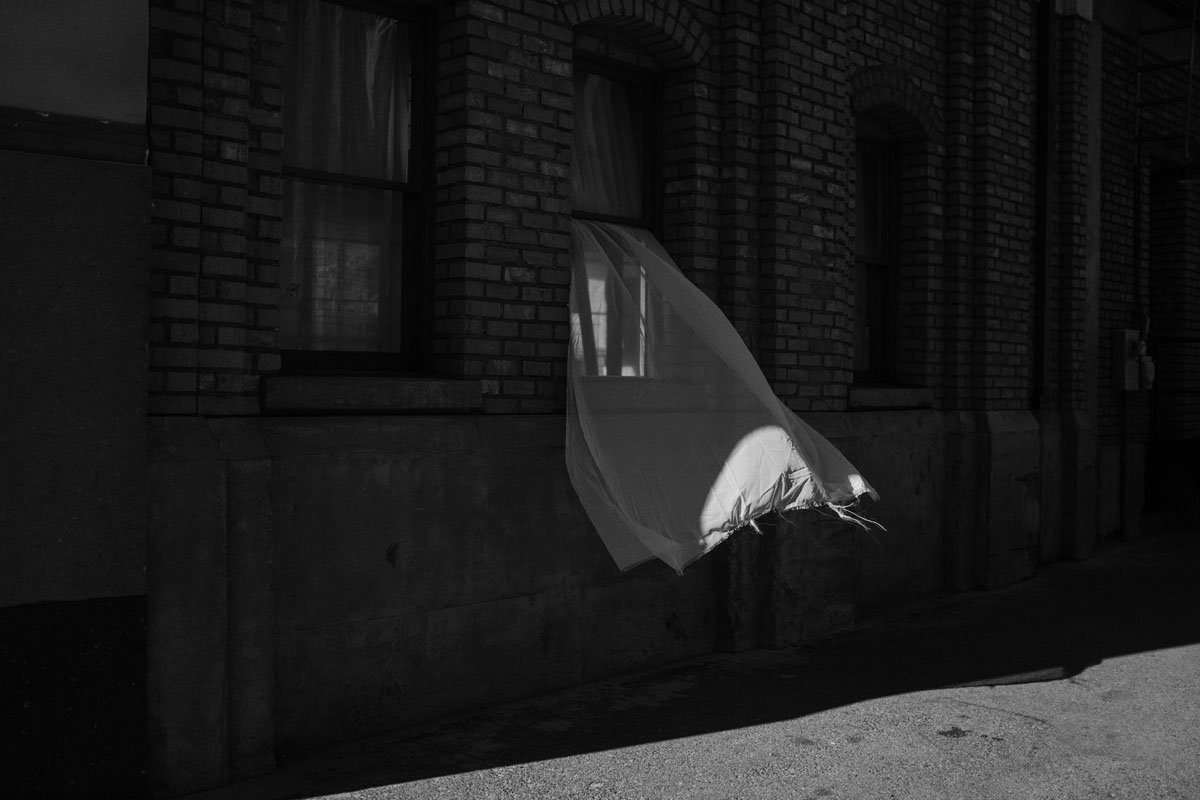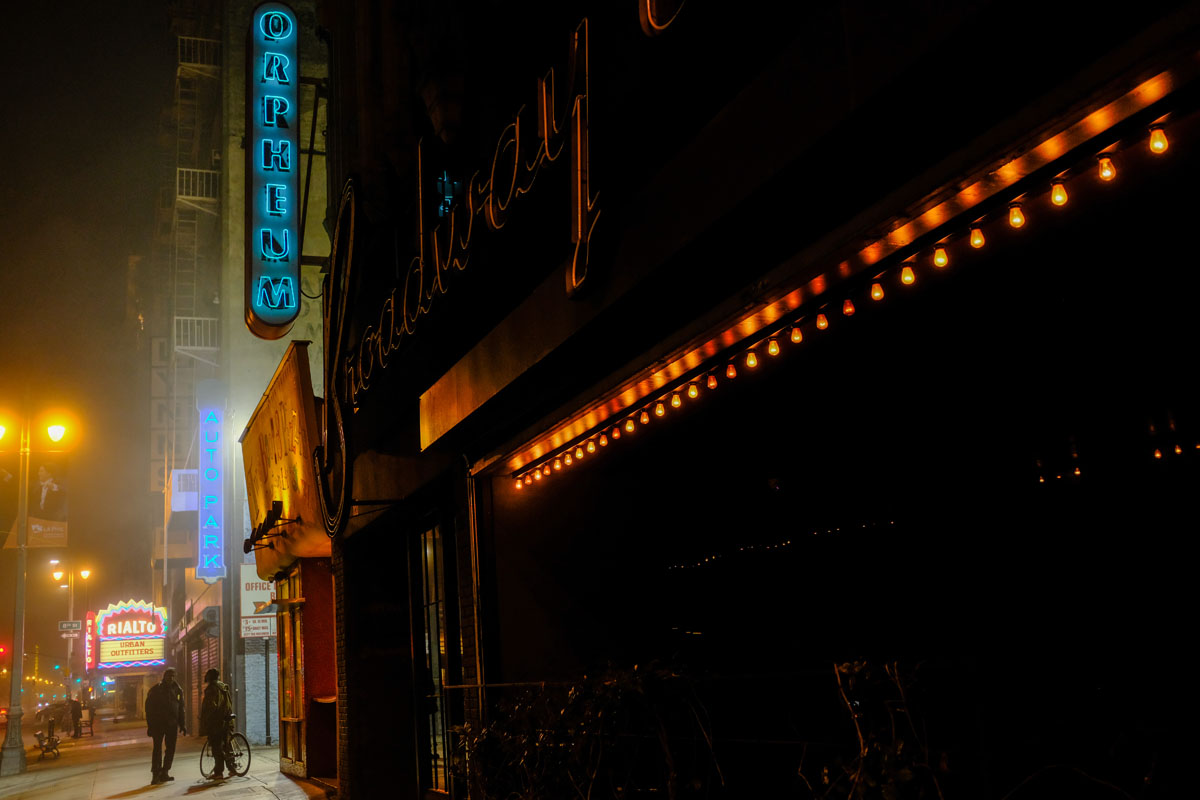
The X100F: X100 Series, Refined
Rinzi Ruiz
Rinzi Ruiz is a freelance photographer based in Los Angeles, California. He originally studied graphic design and computer animation at the Art Institute of Los Angeles but after 12 years in the design industry found a passion for photography and made the switch. He is now known for his street photography and urban photography with his focus on light and shadow and the human condition. Rinzi was a featured photographer in the LA Times Framework and has had various photographs featured in the LA Times SoCal Moments. He has also been featured in Light It Magazine, The Candid Frame Podcast, Inspired Eye Magazine, Art Photo Feature, Fotoflock by Epson and Backyard Opera. His work has been exhibited at the Hatakeyama Gallery and The Think Tank Gallery. His work was published in Arte Fotográfica Magazine and Eloquence International Creators Magazine. His rapid development as a photographer is informed from a commitment to make time for his art, as well as developing a critical eye for what works and what doesn't. Inspired by both contemporary and master photographers, his understanding of the tradition of photography is helping him to develop a distinct voice.
I can remember the time when the original FUJIFILM X100 was released in 2010. At the time I was fairly new to photography but saw something special about the X100. The classic look and feel hooked me in and after seeing some initial reviews I preordered it. The X100 had style and soul. It inspired me to get out and take pictures. What I also found was that practicing with it helped me to learn more about cameras in general and helped me learn to take better pictures. Maybe what helped was the fact that the exposure dials were based off of older film cameras or maybe it was the convenience of carrying a lightweight camera around with me all the time so I was able to practice more. Either way I loved that camera. I was very happy with the image quality and still have the camera today. Even with its known issues, especially with the autofocus speed, I found I rarely had issues with it and it produced some of my favorite photographs. After a few firmware updates it was great for what I used it for which was mainly my personal photos and street photography.
The all black FUJIFILM X100T was next in the series I got and loved it too. It had a lot of what I loved about the X100 but better. The new FUJIFILM X100F takes it all to a new level as far as the X100 Series goes. As soon as I took it out of the box and studied it, I could see the subtle but big differences between it and its predecessors. The first thing I noticed was that it didn’t have the letter on the face of the camera. I wasn’t a fan of the “S” or the “T” on the body of the camera mostly because of the choice of font. The letter was covered up by the half case I put on the camera so it wasn’t really an issue. The X100F not having the letter brings it back to the original for me. I compared the design and placement of everything between the X100F to the X100 and X100T. I noticed that certain lines were different. The X100F feels more refined and feels a lot sleeker. Moving all the buttons on to the right side of the camera is perfect. It’s more convenient and allows for not having to remove my eye from the viewfinder more often to simply get to a button. The simply laid out button placement are all easily accessible with the right thumb. Once I memorized my custom settings I could change things without ever removing the camera from my eye.
The X100F at first looks to be the same size as the X100/X100T but it is just a little wider. Looking at the front I could see the difference in the top middle of the camera between the ISO/shutter dial and the hot shoe is. The X100 has a 90 degree angle whereas the X100F has a curve to it. It definitely adds to the sleek look and is similar to the X-Pro2 look. The finish to the silver is slightly different and the On/Off tab has a finish to match the rest of the camera’s metal. On the X100 the On/Off tab looked more like plastic painted with a silver shine. The X100F is slightly heavier than the X100T. One reason is that the X100F now uses the same batteries that are used on the X-Pro and X-T models, the NP-W126S Lithium Ion battery. This was necessary partly due to the new sensor. It’s amazing that it fits the bigger batteries and still be the compact size that it is. The difference in weight isn’t that much but is noticeable when I held the X100T and then the X100F right after. To me, the weight helps it feel a lot more solid in the hand.
I removed the accessories I had for the X100 and put them on the X100F. The Fujifilm AR-X100 lens adapter ring screws in as it should after removing the protective ring. I’ve used the adapter ring with a UV filter on my X100s to protect the lens and to not have to fuss with a lens cap. I added a soft shutter button on to the shutter and all is well. After adding on the Street Strap camera neck strap I then tried to put on the original LC-X100 Fujifilm Leather Case and noticed that it didn’t fit well and it’s due to the size difference I mentioned earlier. It still sort of fits and it’s a tight fit but the leather part that goes over the camera metal loop doesn’t go over the one on the viewfinder side of the camera so you can’t secure that side. It’s just a bit higher on that side of the camera so you can’t snap it on. I also tried a friend’s half case [Gariz] that has the bottom screw in to the tripod mount and it is just a little off so it won’t fit. The new battery door is likely one reason it was moved but also the new battery door isn’t fit for the older Gariz half cases. I was used to having a half case mostly to keep the camera body from dings and dents. I’m clumsy at times and can’t keep things nice so it helped. I’m sure once they come out with cases that fit the new body I’ll end up with one but really it looks good just the way it is without the half case and fits well in my hands. After using it for about a week, I got used to not having the half case and feel I don’t need it.
Another accessory I was used to having on my X100T was a thumbs-up attachment. The X100F now has the same ISO/Shutter dial that the X-Pro2 has so the thumbs-up got in the way of turning the shutter and lifting the dial to change the ISO setting. I got accustomed to lifting and turning the ISO dial from using the X-Pro2. I’ve read about people liking or hating the ISO dial. I think it fits the camera style and is just fine. What’s great is if I’m in a situation where I need to change ISO settings a lot I can set the ISO dial to “A” and set the scroll wheel in the front to change my ISO. If someone really needs to have a thumbs-up attached this would be a good setting to have it on. But just like the half-case, I realized after not using one for a while I didn’t really need it. The X100F also gets the joystick that the X-Pro2 has and it is an awesome addition. On the X100T I had set a button to be the AF area so having the joystick opened up a button to set for something else on the X100F. The open area between the Q button and the joystick is just right for my thumb to fit and access all the buttons. I think it’s a really smart button layout. Maybe folks with bigger hands or thumbs may still prefer having a thumbs up. Lensmate made one for the X-Pro2 that has a swivel to move the thumb part out of the way to get to the ISO dial. I’m sure they’ll make one to fit the X100F at some point. I had the same experience with the X-Pro2 when I was first using it and didn’t attach a thumbs-up or a half case. The grip parts are just right for my hands and found that a half case on the X-Pro2 body just makes it bigger. I’m quite happy with all the dials and button improvements on the X-Pro2 and X100F. Fujifilm have really thought this out and listened to Fujifilm camera users.
I love the two-tone style and look of the original X100 but when looking at the all black X100T I also love the all black look. I don’t think I’m alone in this and it’s a difficult decision between the two. The two-tone has a classic film camera look and feel that I love and the black just looks awesome and matches up with the rest of the Fujifilm cameras like the X-Pro2 and X-T1 that I have.
So far most of what I’ve talked about is the aesthetic and the feel but, like me, I think that there are a lot of people out there who appreciate how a camera looks and feels. In my opinion this camera’s design is absolutely superb. Form and function is something the Fujifilm designers are very good at. With the X100F there were a few things I saw online that some were saying was a must have for the camera in addition to the 24.3MP X-Trans CMOS III APS-C senor, the new processor and new button layout. I became accustomed to having a tilt-screen from using the X-T1 but I don’t think it belongs on the X100F. In my opinion it’s a type of camera that you put to your eye. The hybrid viewfinder is nice and bright. I enjoy using the OVF and EVF and switch when I need to, depending on the light. I do agree with some who wished it was weather resistant but from what I could gather it would have made the camera bigger. As far as sensor, menus, button placement, I already loved a lot of it on the X-Pro2 and it’s great that it’s now in the X100F. Someone upgrading from an X100T will definitely see the difference but someone who has an X-Pro2 or X-T2 looking for a second body will find it comfortable. The navigation buttons feel a lot better on the X100F than the X-T1 and X100T. They come out just a bit more so I can feel the difference from one button to the other as I slide my thumb over them.
I have the TCL-X100 Tele Adapter for the X100 Series and it changes the focal length to a 35mm (50mm ff equivalent). It’s great for getting a little bit more reach and for shooting portraits. I recently found out there are a TCL-X100 II and WCL-X100 II being released and the difference is that when they are screwed onto the camera you won’t have to go into the menus and change the setting to adapter that is put on. It sets it automatically. I’ve forgotten to change it a few times and it’s more noticeable in OVF mode so it’s a good update. I’m looking forward to getting a WCL-X100 II, which gives you about 18mm (27mm ff equivalent), to add to the set. The X100F and the two adapters is such a great small camera set up perfect for traveling light and street shooting. It would be nice to see an adapter that would give a 14mm (21mm ff equivalent) field of view and even a 56mm (85mm ff equivalent) would be great. There is a digital teleconverter in-camera which only saves as JPEGS but I’m sure it’s useful when needed. It gives a 50mm and 75mm full frame equivalent.
The X100F is a camera I can carry with me wherever I go. I took it with me for work, travel, family and friend get-togethers and of course shooting on the streets. I like having a camera that I can use for gigs and for personal work. It’s a good way to really get to know a camera and test its limits. I have used the X100 Series cameras for events, documentary work and weddings as a second camera to my X-T1 or X-Pro2 set up. For shooting street it is unobtrusive and quiet so it’s good for getting in close and taking candid moments.
The 24 megapixel X-Trans CMOS III Sensor is fantastic and I’ve never had issues with any version of the X-Trans sensors. I typically shoot in RAW but the last few months of testing the X100F I’ve shot in RAW+JPEG and used Fujifilm’s film simulations. Fujifilm have added the ACROS black and white film simulation and I really like it. The JPEGS are great straight out of the camera so it’s made me rethink about shooting only in RAW. I’ve heard and read folks saying that there is something special about how the X-Trans sensor when creating the JPEG that can’t be exactly reproduced when processing the RAW file especially with colors. I agree with them. I wanted to note here that all the images here are shot with the X100F with the beta firmware in JPEG with minor processing.
The EF-X20 flash works well on the X100F and slides in as it should on the hot shoe. In my opinion it does look a tad better on an all black body but suites the two-tone just as well. I also used it off camera using commander mode and it works just fine. The EF-42 flash’s mount unfortunately hangs a bit over the ISO/Shutter dial when it’s on the camera so changing the ISO is a small issue but still possible. I also used the flash off camera most of the time so it wasn’t an issue at all for me. Someone coming from the X100T will notice a difference with the user interface of the flash menu but after going through it once it’s easy to figure out. Cheap China made trigger and receivers worked on it so I’m sure more expensive brands will work just fine.
As you may have been able to tell, I’m not a typical camera reviewer. The last camera I attempted to review was the X-Pro1 when it was released in 2012. I’ve always loved the X100 Series cameras. My first X100 really got me inspired to get out and take pictures. It put me in a creative zone. The X100F is no different. It still has style and it still has soul. I love the new sleek and refined look. All the updates are awesome and I’ve enjoyed carrying and shooting around with it for the last few months. Big huge thanks to Fujifilm USA.















































